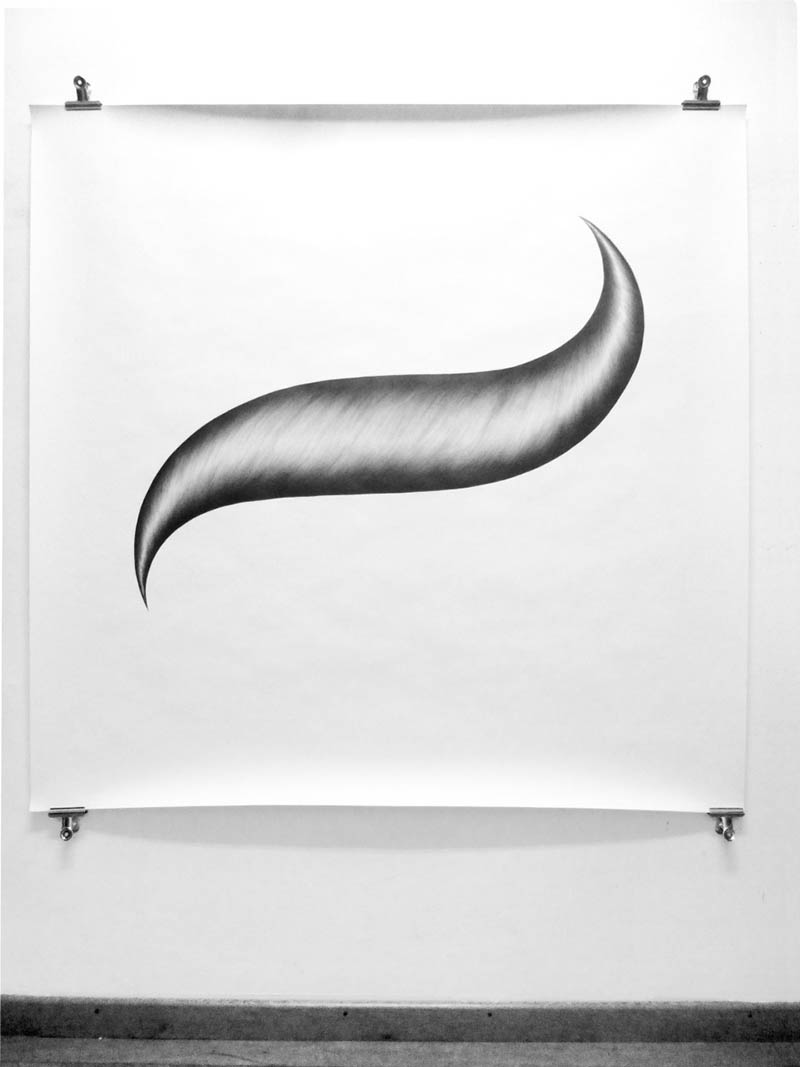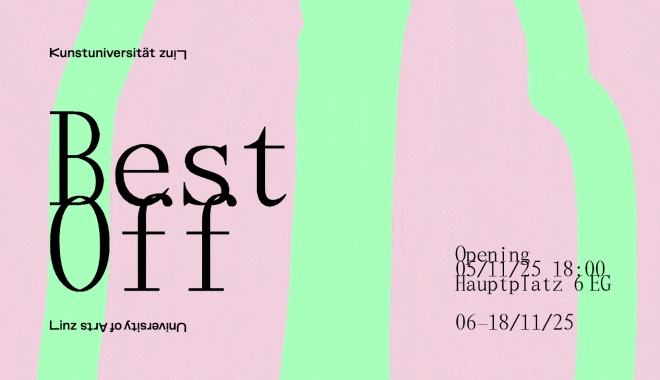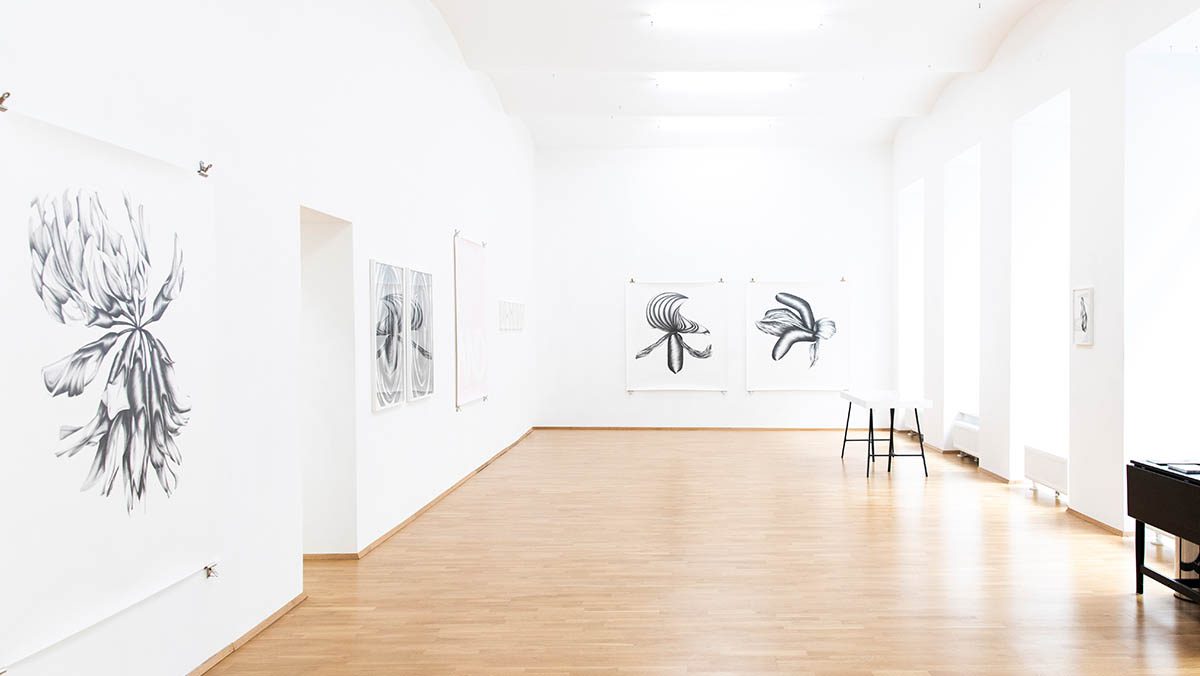
Dimension spielt eine große Rolle, so bläst sie zum Beispiel Satzzeichen auf, stellt diese in ein eigenes Vakuum und beschäftigt sich mit der Frage der Struktur. Grundlage und Ausgangspunkt der künstlerischen Praxis ist die Wahrnehmung, sowohl mit sich selbst als auch mit der Umgebung. Die Zeichnung ist heute viel selbstverständlicher und hat sich entscheidend von anderen Kunstgattungen emanzipiert, so hat sich auch Lanner hauptsächlich dieser Disziplin verschrieben, testet die Grenzen dieses Mediums aus und ruft uns die Unmittelbarkeit der Zeichnung immer wieder ins Gedächtnis. Ihre neue Serie „Not Long Now“ ist im letzten Herbst und Winter entstanden, inspiriert von anderen Genres, wie zum Beispiel Musik, Literatur oder Theater, thematisiert diese Zeitlichkeit. Es geht um Distanz und Nähe, um Wahrnehmung, um Entschleunigung und dem Verweilen im Moment, es geht ihr demnach um die Frage der Essenz.
Im Gespräch mit Lavinia Lanner ließ die Künstlerin einen Blick hinter die Kulissen zu, erzählte, welche Bedeutung Zeichnung für sie hat und warum ihre neue Serie „Not Long Now“ am Puls der Zeit schlägt.
Zeichnen ist eine der ältesten Kunstformen, die man bereits im antiken Griechenland wiederfinden kann. In der Renaissance gewinnt die Zeichnung an großer Bedeutung, da sie als notwendige Voraussetzung für die Schaffung von Kunstwerken, Malereien, Skulpturen oder Architektur angesehen wurde. Du legst nun in deiner künstlerischen Praxis den Fokus hauptsächlich auf die Zeichnung und testest dabei immer wieder die Grenzen dieses Mediums aus. Was reizt dich an der Zeichnung besonders und warum?
Mein Interesse für die Zeichnung gründet sich einerseits genau darauf, sie aus der dienenden Position zu befreien. Wenn wir ehrlich sind, ist sie schon lange frei. Es gibt viele großartige Zeitgenoss*innen, welche die Zeichnung als ihr Hauptmedium sehen. Andererseits – und das mache ich besonders in der Serie der gezeichneten Pinselstriche – drehe ich dieses Machtgefälle gerne um. Malerei als Skizze für die Zeichnung zu verwenden. Rekonstruktion von schon Dagewesenem.
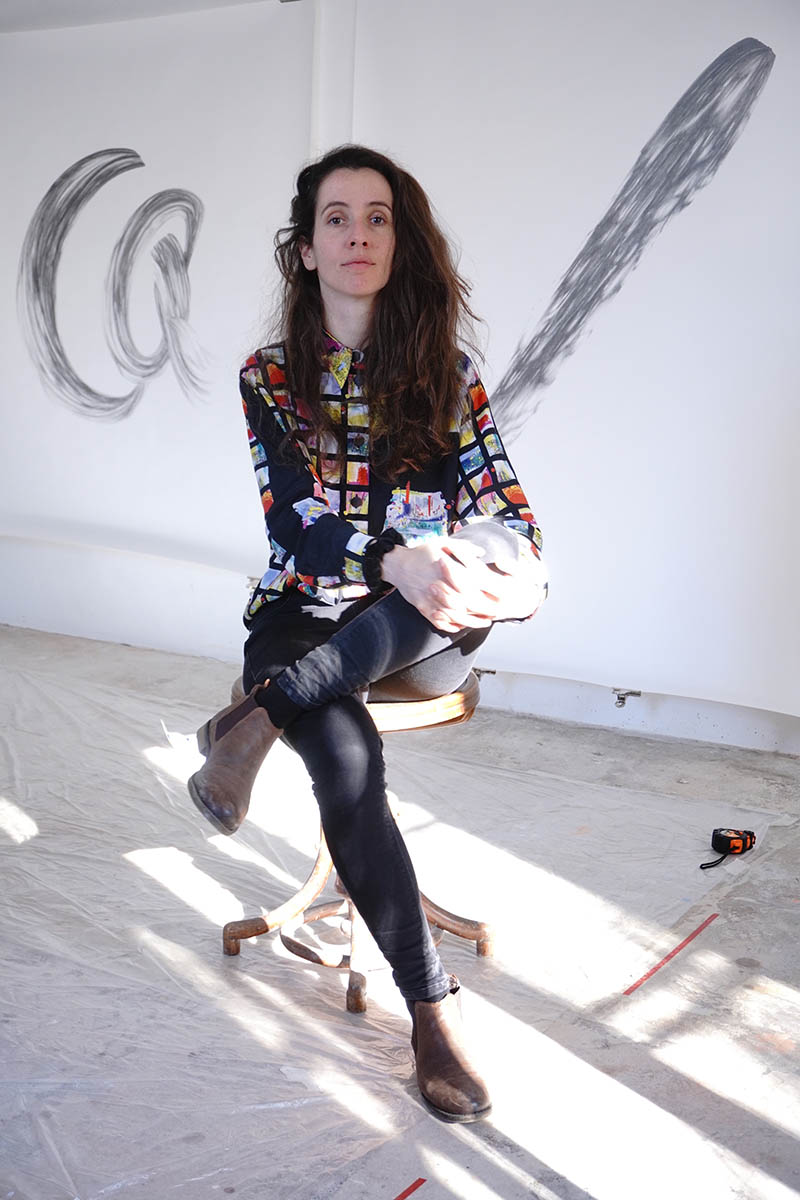
Ich interessiere mich für das Mittel selbst. Bleistift und Papier, das ist etwas so Einfaches und weit Verbreitetes. Jede*r findet dazu einen Anknüpfungspunkt/Bezug. Das gefällt mir. Auch der direkte Weg vom Gedanken aufs Blatt. Das Spitzen des Bleistifts, die Bewegung der Hand, des Körpers, wie sich langsam eine Form aus dem Blatt schält. Oft empfinde ich den Zeichenprozess als bildhauerische Geste. Erhaben tritt eine Form hervor. Ein anderes Mal ergibt sich eine Vertiefung. Ich sehe die Welt aus den Augen einer Zeichnerin. Ich möchte alles, was ich sehe, in Gezeichnetes verwandeln und mir so aneignen. Die Zeichnung ist intim und großzügig zugleich, man kann mit ihr ganze Räume füllen. Das interessiert mich. Alles vollzuzeichnen. Und vieles mehr…
Das Spitzen des Bleistifts, die Bewegung der Hand, des Körpers, wie sich langsam eine Form aus dem Blatt schält. Oft empfinde ich den Zeichenprozess als bildhauerische Geste.
In deiner neuen Serie „Not Long Now“ spielt die zeitliche Komponente ja nicht nur im künstlerischen Prozess eine entscheidende Rolle, sondern agiert auch als zentrales Thema. „Not Long Now“ thematisiert Zeitlichkeit aus verschiedenen Perspektiven. Wie gehst du auf das Thema zu und was interessiert dich daran so sehr?
Zeitlichkeit als messbare Größe weniger als die individuell empfundene Seite daran. Abgesehen davon, dass Zeit im Sinne des Entstehungsprozesses in meiner Arbeit ein sehr präsenter Aspekt ist, kommt sie in anderer Weise in dieser Serie vor. Das Hinwarten und -sehnen ist ja schon titelgebend. Welche Rolle dabei das Jetzt spielt, wird besonders in der Arbeit O.T. (NOW) ersichtlich. Das Wort ist am Anfang und am Ende jeweils durch das Format abgeschnitten. Ähnlich einer Kamerafahrt streift das Auge über das Wort. In Bewegung begriffen und starr zugleich sind dabei die Buchstaben. Starr, weil sie in den schraffierten Hintergrund gewissermaßen eingelassen, oder herausgestanzt, sind.
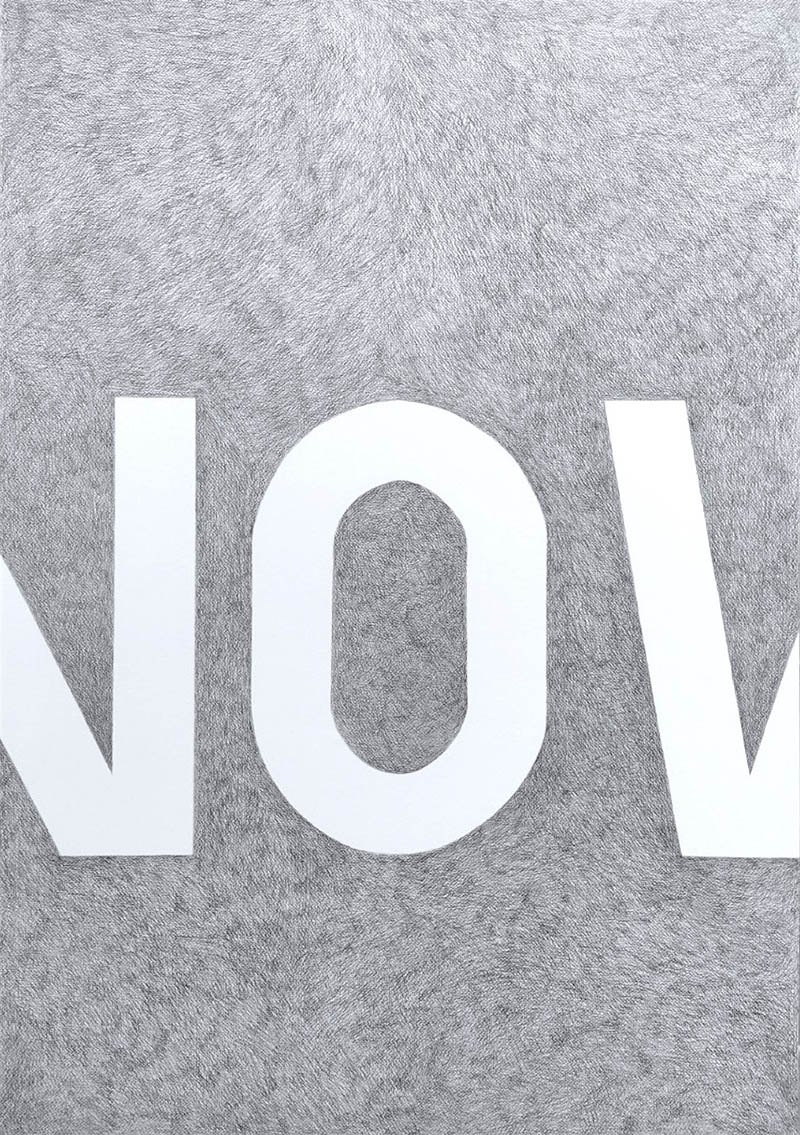
Kommen wir nun zu einem anderen Aspekt der Serie. In der Vergangenheit hast du dich ja schon künstlerisch mit Satzzeichen auseinandergesetzt und nun findet diese Beschäftigung auch in der Serie „Not Long Now“ statt. Woher rührt die Faszination zur Orthografie und welchen Einfluss hat Literatur oder andere Kunstbereiche im Generellen auf deine künstlerische Praxis?
Die letzte Frage kann ich prompt beantworten: andere Kunstbereiche spielen eine große Rolle. Sei dies Literatur, Musik, Performance oder näher verwandte Kunstformen wie Skulptur. Den Austausch zu Künstler*innen anderer Sparten nicht zu suchen, wäre, so finde ich, sogar unverzeihlich, da einem ein anderer Blickwinkel und Herangehensweisen an oft ganz ähnliche Thematiken entgehen würden und man ewig und ohne Vorankommen im eigenen Sumpf waten würde. Not Long Now ist auch der Titel eines Songs des britischen Musikers James Blake. Else Lasker-Schüler ist zwar keine Zeitgenossin, hat aber ein großartiges Gedicht Weltende geschrieben und auch der Roman Winters Garten der österreichischen Autorin Valerie Fritsch enthält nicht unwesentliche Inputs konkret für diese Serie. Eine intensive Beschäftigung mit der skulpturalen Arbeit von Rachel Whiteread hat mich zum Nachdenken über Volumina veranlasst und so könnte die Liste noch lange fortgesetzt werden.
Was die Satzzeichen betrifft, so interessiert mich neben ihrer graphischen Beschaffenheit und ihrer Form, ihre Präsenz am Blatt, wenn ich sie zeichne und auch ihre sprachliche Funktion. Geöffnete Anführungszeichen (hier liebe ich übrigens auch die vom Aussterben bedrohte Bezeichnung Gänsefüßchen) sind nicht nur zwei parallel angeordnete Körper im Raum, sondern eröffnen auch etwas Besonderes: eine direkte Rede beispielsweise. Dieses Luftholen und die kurze sprachliche Pause vor dem neuerlichen Ansetzen – darauf möchte ich die Aufmerksamkeit lenken, wenn ich sie zeichne. So auch beim Gedankenstrich – seine poetische Wirkung – und auch hier wieder seine Funktion als rhythmisches Sprachelement möchte ich dabei hervorheben. Ihn seinem Kontext entreißen und ihm im Vakuum des Papiers eine Bühne geben.
